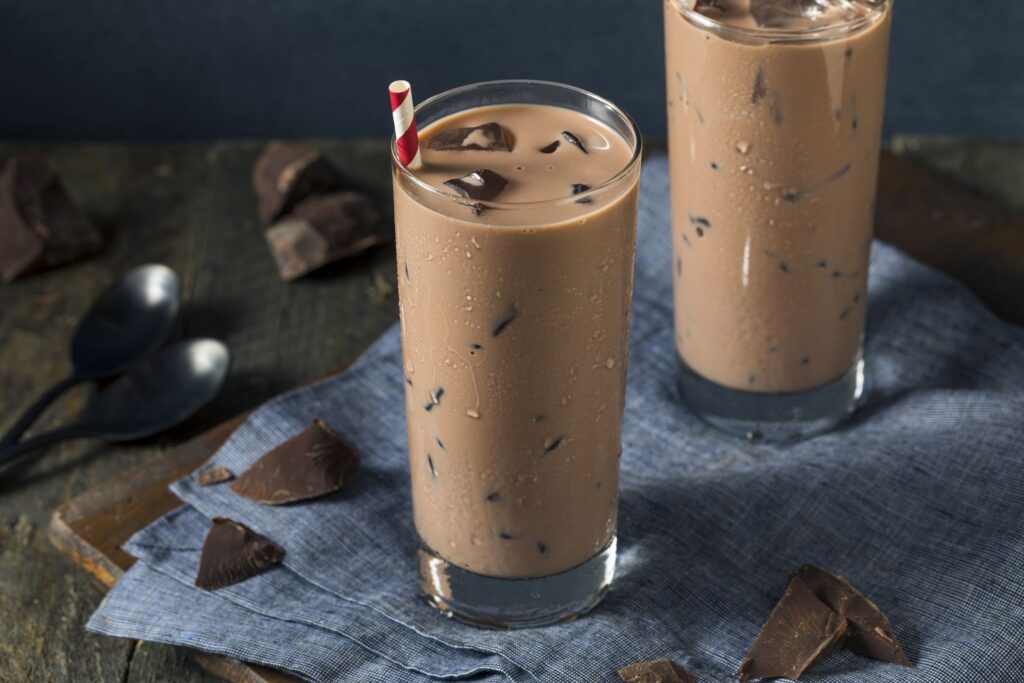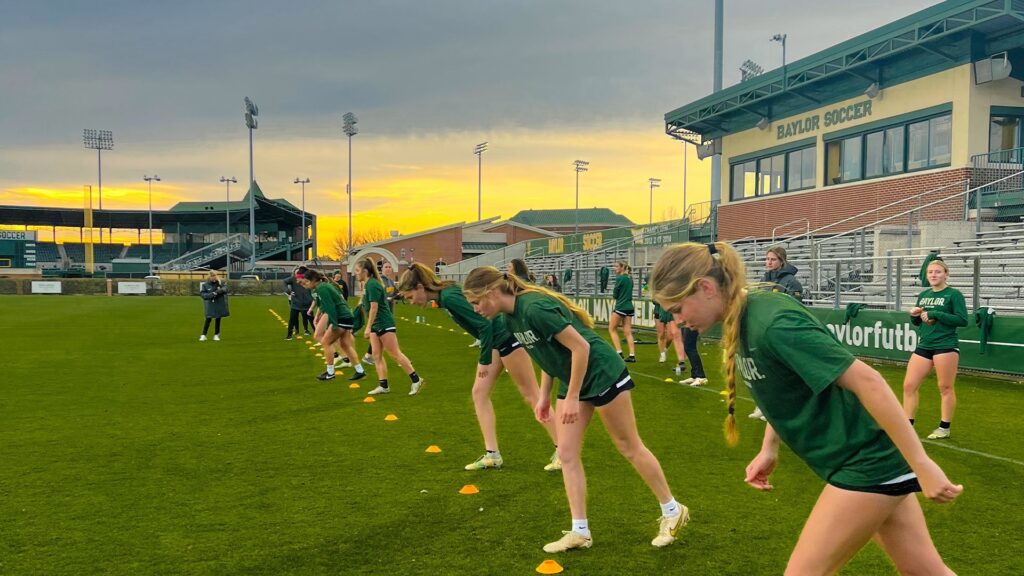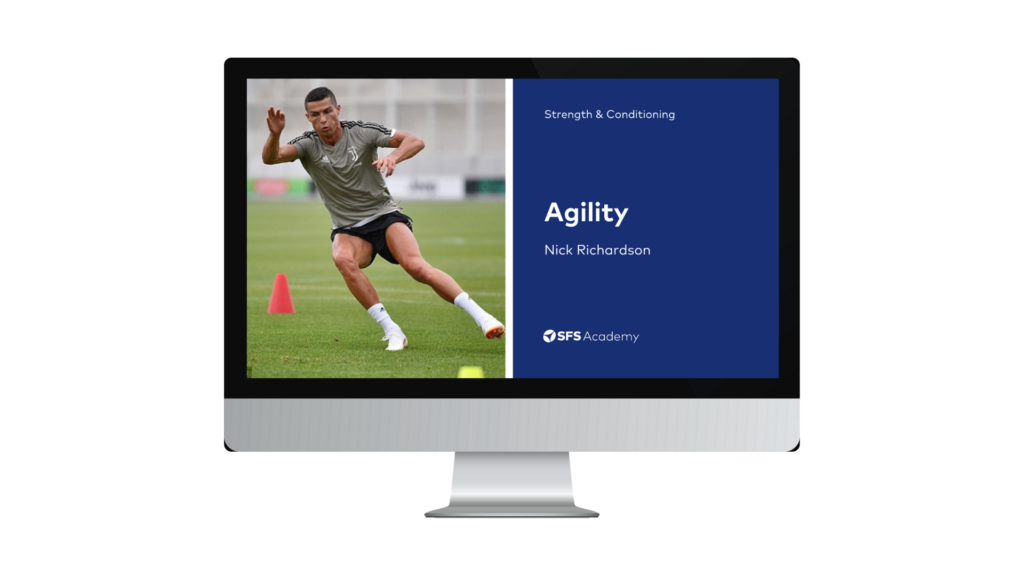This week in the world of sports science, here’s what happened…
- Is chocolate milk the optimum post-exercise drink?
- Change this one thing and improve your Beep Test performance!
- Are there any long-term effects of Osgood-Schlatter disease?
Is chocolate milk the optimum post-exercise drink?

A recent study has further solidified the standing of chocolate milk as an effective post-exercise recovery drink. This study involved 22 male adult professional football players who were divided into a control group and an experimental group. The experimental group consumed chocolate milk after each training session over a duration of three weeks.
The researchers observed that the consumption of chocolate milk resulted in a significant decrease in the levels of muscle and tissue damage markers, specifically the enzymes creatine kinase, lactate dehydrogenase, AST, ALT, and ALP. Additionally, participants in the chocolate milk group reported a notable reduction in muscle pain, as quantified by the McGill Pain Questionnaire.
Consequently, this study suggests that chocolate milk intake following exercise can effectively reduce muscle damage enzymes, thereby enhancing the recovery process. In the context of this study, the chocolate milk administered was measured at 672 millilitres, which contained 80 grams of carbohydrates (of which 46 grams were sugars) and 22.8 grams of protein.
If you would like to learn more about chocolate milk, check out our blog Back To Basics: Chocolate Milk In Recovery And Performance and our infographic (here).
Change this one thing and improve your Beep Test performance!

If you’ve ever taken part in the Beep Test, you know the struggle of running 20-metre shuttles before the dreaded “beep” sounds. However, recent research has uncovered a possible hack to boost your Beep Test performance!
Studies show that while music can enhance Beep Test results, it sometimes interferes with hearing that crucial “beep.” To explore this further, researchers had participants complete three Beep Tests under different conditions. In Condition A, they used the traditional “beep” sound, while Conditions B and C featured two alternative sounds that were gradually progressive and more engaging.
When analysing performance across the three conditions, participants covered significantly more distance in condition B, which averaged 1,054 metres. In comparison, condition A, which used the traditional beep sound, had an average distance of 966 metres. Additionally, condition C, although not scientifically significant, also resulted in participants running a greater distance than the traditional beep sound, with an average of 1,008 metres.
Furthermore, participants reported that the Beep Tests incorporating sounds from conditions B and C were more enjoyable than the traditional Beep Test. Therefore, the researchers propose that progressively changing sounds may better engage participants, helping to distract them from the discomfort associated with completing the Beep Test.
So, if you’re looking to improve your Beep Test performance, changing the sounds might be a clever hack! You can find the sounds used in conditions B and C here. Additionally, if you want to learn more about the Beep Test, we have an excellent blog post available: Multistage Fitness (Beep) Test.
Are there any long-term effects of Osgood-Schlatter disease?

Osgood-Schlatter disease represents a prevalent cause of knee pain among adolescent athletes, typically coinciding with periods of growth spurts. Generally, the condition resolves once bone growth is complete, leaving no significant long-term repercussions. However, a recent study has called this assumption into question.
The study contacted 1,281 Danish individuals who had been diagnosed with Osgood-Schlatter disease between 1977 and 2020, and 400 of them responded. Notably, 85% of these respondents reported having a bony prominence on their knee, which is a common consequence of the condition. Alarmingly, 73% reported persistent pain or injury complications related to the knee. Furthermore, this population exhibited poorer scores on the Knee Injury and Osteoarthritis Outcome Score compared to healthy population estimates. They were also found to be at an increased risk of developing “jumper’s knee,” an overuse injury affecting the knee joint.
This study underscores that while Osgood-Schlatter disease poses the greatest risk during adolescence, the potential consequences in later life may be more severe than previously understood. Consequently, it is essential to implement more effective management strategies for Osgood-Schlatter disease as individuals enter adulthood.
From us this week:
>> New course: Decision Making in Team Sports
>> New podcast: Inside Catapult: Global Trends, Common Pitfalls & the Future of Sports Science
>> New infographic: Sleep Strategy To Enhance Athletic Performance
>> New article: Hydrotherapy
Access to a growing library of sports science courses
SFS Academy is an all-access membership to premium sports science education.
With SFS Academy, you’ll learn from some of the best coaches around the world as they teach you how to apply the latest research and practice with your athletes.




